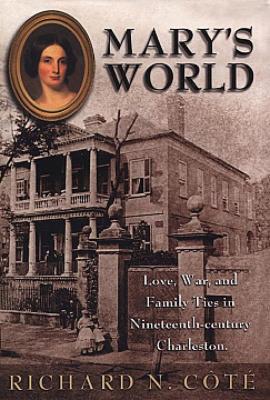Mary Motte Alston Pringle Receipt Book
View Online
Holding Library Call No.
Manuscript ; 1285.02.013Manuscript Cookbooks Survey Database ID#
1574Place of Origin
United States ➔ South Carolina ➔ CharlestonDate of Composition
ca. 1840-ca. 1880Description
Mary Motte Alston Pringle (1803-1884) was the youngest child of William Alston (1756-1839), who fought in the Revolutionary War, and his second wife, Mary Brewton Motte Alston (1769-1838). She was raised in a Georgian brick mansion built by her great uncle Miles Brewton, and she lived in the same house her entire life. In 1822, she married William Bull Pringle. The couple had thirteen children born between 1823 and 1842, all of whom lived into adulthood. William Pringle owned four rice plantations and more than 300 slaves. The library's collection of Mary Pringle's papers includes a household inventory book, a volume listing clothing and supplies issued to slaves, and numerous letters to her sons, two of whom died fighting for the Confederacy. Mary's World, a biography by Richard N. Cote based in part on Mary's letters, was published in 2011.Mary Motte Alston Pringle's recipe book is written in a single, neat hand, in notebook of bound ruled pages with stamped pagination. The book contains culinary recipes on pages 1-37, miscellaneous recipes (mostly household but some recipes for food and drink) on pages 38-73, and medical recipes on pages 98-155. Pages 74-97 are blank. There is a complete page index in the back. For the most part, the recipes are characteristic of late-antebellum southern gentry cooking, similar to (though not copied from) the recipes outlined in Sarah Rutledge's The Carolina Housewife, published in 1847. A fireplace kitchen (as opposed to a stove kitchen) is implied throughout, in phrases like "on the fire," "brisk oven," and "Dutch oven." However, a recipe for making coffee on page 28 is dated 1880. This recipe may have been added after the bulk of the book was compiled, as it is written with a different squib from the rest of the book. The book's high degree of organization and the neatness of the hand indicate that the book is a fair copy of recipes that Mary Pringle had collected over the years. Most of the recipes are attributed, some to friends and family members, and some to her enslaved house servants, including Cretia Stewart and Cretia's husband, Scipio.
The culinary recipes proceed as follows, with sporadic recipes out of category: puddings, pages 1-2; cakes (including hot breakfast cakes) and pies, pages 3-11; dessert creams and custards, pages 12-14; more cakes, pages 14-15; preserves, pages 16-17; ice creams, page 19; yeast and breads, pages 21-23; soups and meat dishes, pages 25-27; coffee, page 28; meat cures and pickles, pages 29-30; vegetable preserving, including a recipe for tomato paste, and condiments, pages 31-32; sickroom cooking, pages 35-37. There are three recipes for blackberry wine on page 50, various pickles on pages on pages 55-56, and a lengthy recipe for cooking terrapin on page 58. The book has few distinctively southern recipes other than some of its breakfast cakes, such as Rice Flour puffs (page 3), cracker-like Plain Wafers baked in an iron (page 15), and Corn Bread, made without sugar or chemical leavening and baked "on a plate," page 23. However, the great number of recipes for breakfast and tea cakes is a marker of antebellum southern cooking. It bears noting that the book has a recipe for Bavarian Cream (page 12), and the The Carolina Housewife also has a recipe for this dessert (a different one). The rest of the country does not seem to have learned about Bavarian creams until after the Civil War.
See also Mary Brewton Motte Alston and Mary Motte Alston Pringle Receipt Book.

